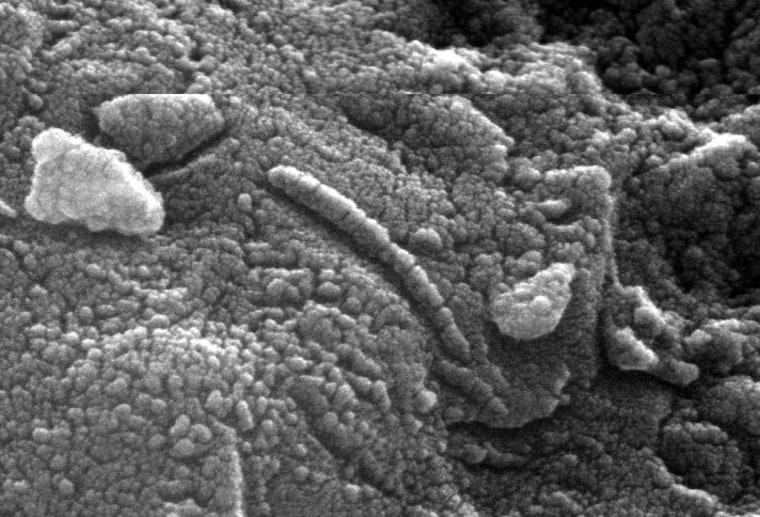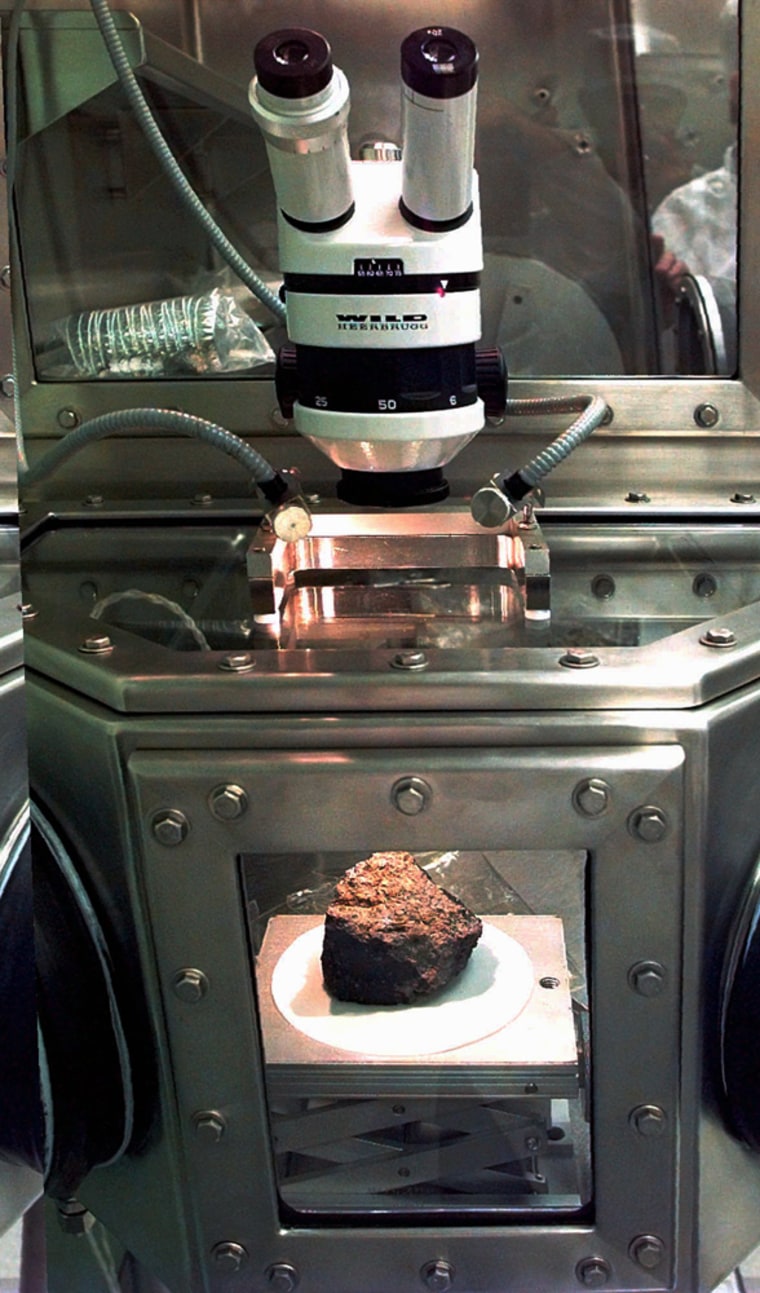New analysis of a 13,000-year-old Mars meteorite, retrieved from Antarctica, has rekindled the debate about whether the ancient rock holds signs of past microbial Martian life.
The study is reminiscent of initial research, published in 1996, suggesting that very, very tiny — nanometer-sized — iron sulfide and iron oxide grains in the meteorite had biological origins, and that tiny, worm-shaped objects in the rock, known as ALH84001, could be the fossilized remains of Martian microbes.
The research was widely panned, and the NASA team making claims for life on Mars subsequently retreated.
Now a team of experts at the NASA Johnson Space Center, including the lead astrobiologist in the 1996 study, David McKay, have looked at the rock again using a new analysis technique, called ion beam milling.
They conclude that there is enough evidence to rule out at least one geological process as the one that formed the nanocrystal iron grains. That leaves something that was once living — biology — as a possible cause.
The scientists also point out the similarity between magnetites found in the Martian meteorite and a type of Earth bacteria on land known as magnetotactic bacteria.
"They look virtually identical," said Dennis Bazylinski, a geo-microbiologist at the University of Nevada, told Discovery News.
Bazylinski reviewed the paper before it was published in the November issue of Geochimica et Cosmochimica Acta.
About 25 percent of the magnetites in ALH84001 have an elongated structure typical of magnetic bacteria on Earth.
That's not enough to satisfy Michael Fuller, who researches magnetism at the University of Hawaii's Institute of Geophysics and Planetology. "The grain-sized distribution is pretty small," Fuller told Discovery News, adding that once iron particles get smaller than about 20 nanometers, the magnetism breaks down.
"Most of them (the grains discussed in the new research) appear too small. It doesn't look to me that they are very similar to magnetotactic bacteria," he said.
Fuller also says he is not convinced the magnetites in the Mars rock couldn't have been produced by shock when the meteorite blasted through Earth's atmosphere. A similar shock process produces small iron particles in the lunar soil, he added.

"It seems to me that they haven't really solved the whole thing," Fuller said. "I remain a skeptic."
But Bazylinski argues the research puts a nail in the coffin of one geological theory — that the magnetites were formed by the melting of tiny carbonate disks found in the meteorite.
"This is no smoking gun," Bazylinski said. "It'd be great if this was bacteria. I'd be the first one to carry the flag. But this one meteorite is not going to answer the question of whether there was life on ancient Mars or not."
